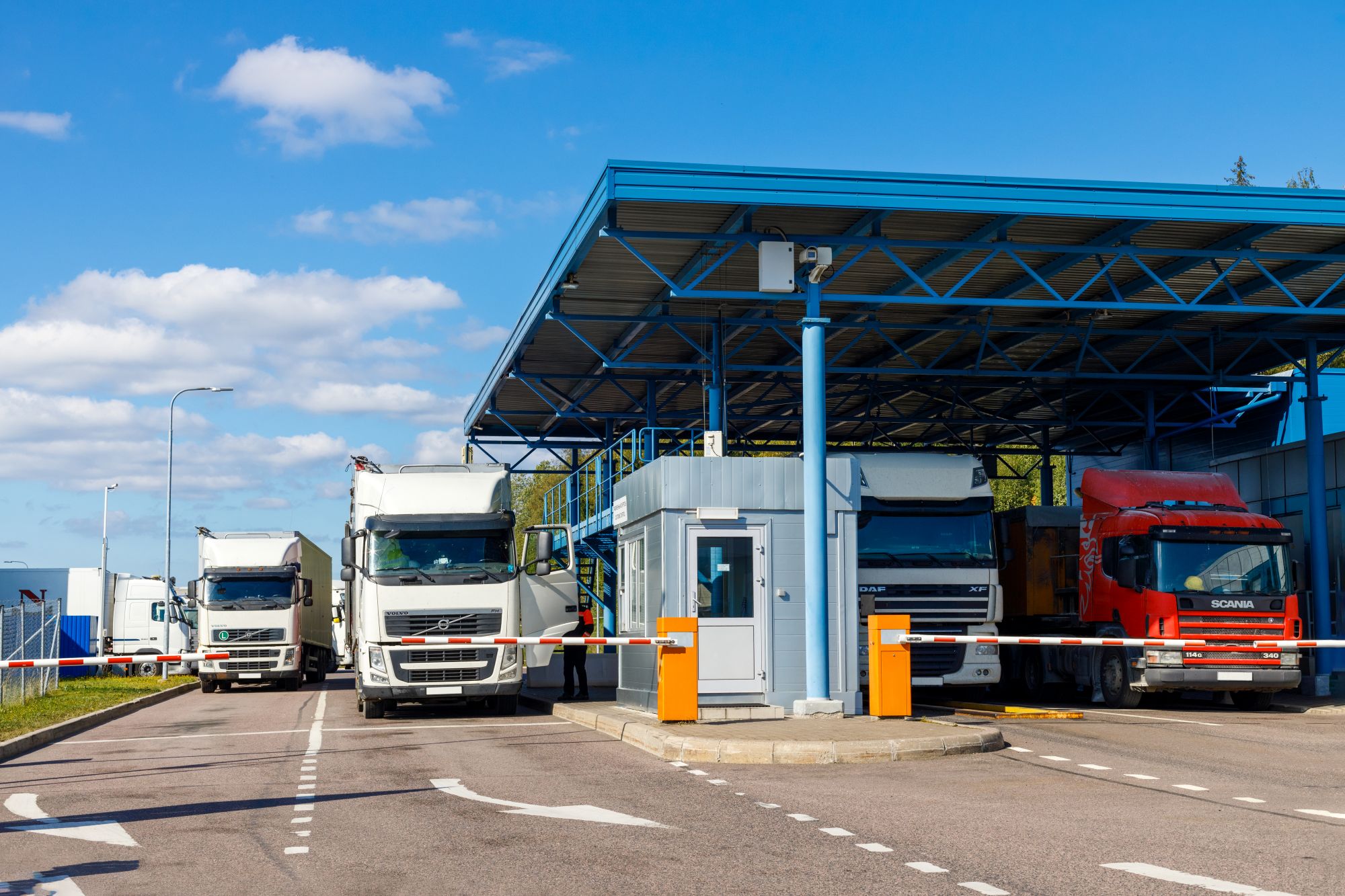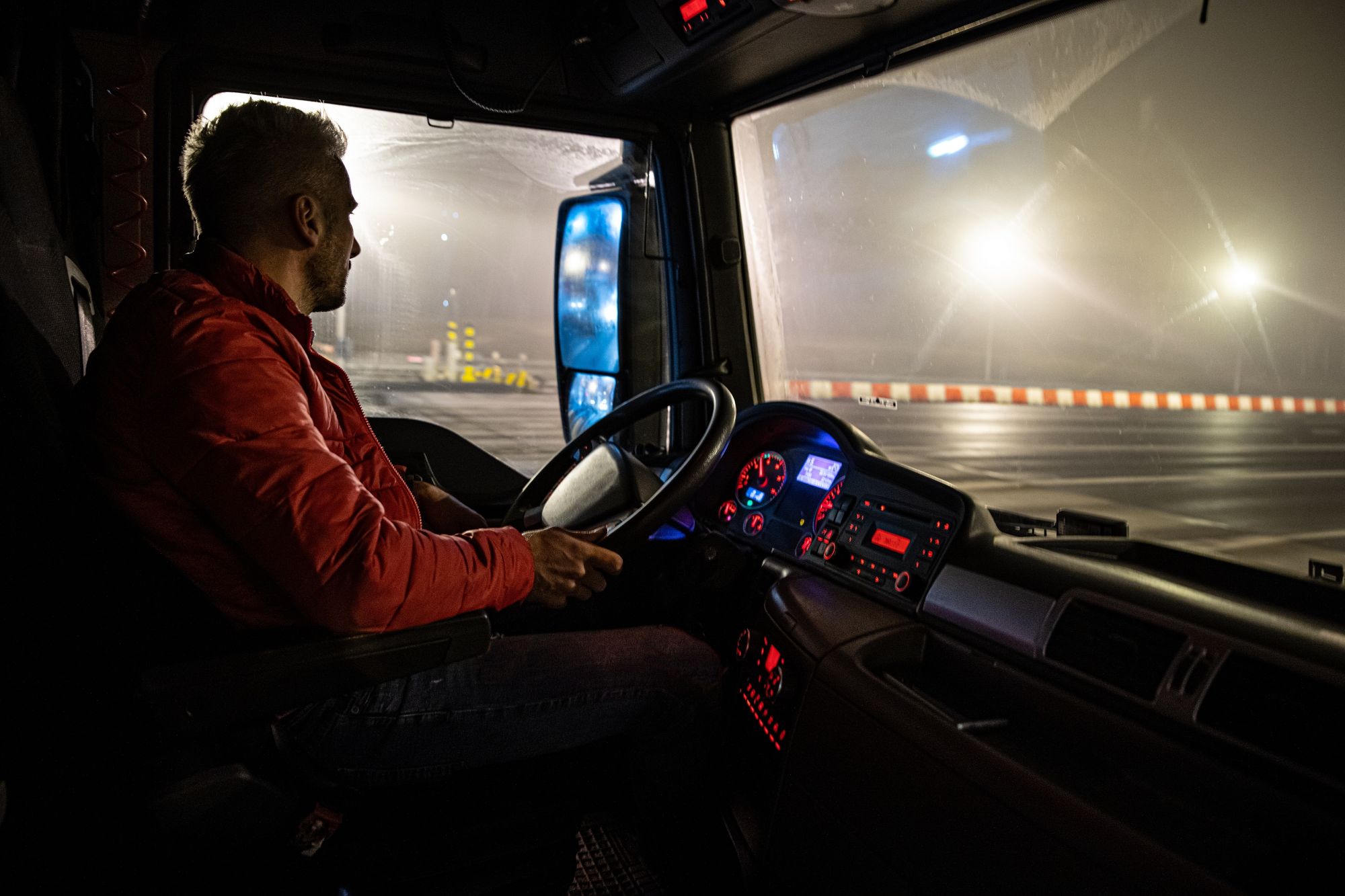
Guest
Польско-украинская граница вновь открыта: Что нужно знать операторам автопарков
Создано: 18.06.2025
•
Обновлено: 20.06.2025
После нескольких месяцев перебоев грузовые перевозки между Польшей и Украиной снова стали свободными. Но в условиях сохраняющейся напряженности и угрозы возобновления блокады операторы автопарков должны сохранять бдительность и быть готовыми к защите благополучия водителей по обе стороны границы.
В этой статье рассказывается о том, что стало причиной сбоев в работе, как они повлияли на водителей и какие шаги вы можете предпринять, чтобы уменьшить их последствия в случае возобновления забастовки.
Что стало причиной блокады польско-украинской границы в 2024 году?
Ситуация началась в конце 2023 года, когда польские водители грузовиков начали протестовать на основных пограничных переходах. Они утверждали, что решение ЕС отменить требования по выдаче разрешений для украинских перевозчиков, принятое в качестве временной меры в военное время, привело к наплыву более дешевых операторов, которые ущемляли польские фирмы.
Протесты нарастали, блокируя ключевые грузовые маршруты в Украину и задерживая тысячи автомобилей в очередях, растянувшихся на многие километры. На пике блокады более 5 000 грузовиков застряли на границе, некоторые ждали пересечения более недели. Неукраинские водители из ЕС также страдали от длительных задержек, напряженных графиков и плохих условий.
То, что началось как логистический спор, переросло в более широкий протест польских дальнобойщиков против украинского импорта, доступа на рынок и влияния чрезвычайных транспортных мер ЕС. Вскоре к ним присоединились польские фермеры, недовольные влиянием украинской сельскохозяйственной продукции на внутренние цены.
Польские водители также критиковали украинскую систему электронной очереди для пересечения границы - известную как eCherha - утверждая, что она ставит перевозчиков из ЕС в невыгодное положение. Хотя система была разработана для оптимизации грузоперевозок, позволяя перевозчикам заранее бронировать места для пересечения границы, польские операторы утверждали, что она дает украинским компаниям большую гибкость и более быстрый доступ. Такие проблемы, как языковой барьер, ограниченная интеграция с логистическими системами ЕС и непоследовательное внедрение, привели к тому, что многие водители из ЕС стали дольше ждать на границе, что еще больше усилило ощущение несправедливого отношения и способствовало более широким беспорядкам.
Хронология блокады польско-украинской границы
Ноябрь 2023: Протесты начинаются на переходах Дорохуск, Гребенне и Корчова.
Декабрь 2023: Заблокировано больше переходов, включая Медыку; три украинских водителя погибают в очередях.
Январь 2024: Польское правительство достигло соглашения о приостановке блокады до марта.
Март-апрель 2024: Спорадические блокады возобновляются на небольших переходах.
Май 2025: Новая четырехмесячная блокада началась в Ягодин-Дорохуске, но была отменена в суде.
Июнь 2025: Все основные пункты пересечения границы остаются открытыми, но риск будущих перебоев в работе сохраняется.
Что делает польское правительство для улучшения ситуации?
В ответ на перебои и их более широкие последствия польское правительство заняло активную позицию. Пункты пересечения границы с Украиной были отнесены к критически важным объектам инфраструктуры, что обеспечивает им большую защиту от будущих блокад и помогает обеспечить непрерывный поток грузов, гуманитарной помощи и военной поддержки.
Для общего укрепления связей между двумя странами был также создан новый Совет по сотрудничеству с Украиной. В его задачи входит улучшение координации в сфере торговли и транспорта. Параллельно Польша инвестирует в инфраструктуру восточной границы и взаимодействует с представителями ЕС, добиваясь более справедливых условий для польских перевозчиков. Хотя эти действия не могут разрешить ситуацию в одночасье, они свидетельствуют о долгосрочном стремлении к стабильности и структурированному диалогу.

Влияние на водителей
Блокада создала неприемлемые условия для профессиональных водителей. Многие проводили дни и недели в своих кабинах, не имея доступа к туалетам, еде или проточной воде. Некоторые застряли на морозе, не имея ни отопления, ни укрытия.
Три украинских водителя погибли во время блокады, причем, как считается, этому способствовали истощение и нелеченые заболевания.
Перебои также вызвали значительное психическое и эмоциональное напряжение, особенно у украинских водителей, пытавшихся добраться до дома или вернуться из него в военное время. Задержки повлияли не только на торговлю, но и на перевозку топлива, помощи и военных грузов, необходимых для национальной обороны Украины.
Хотя польские протестующие настаивали на том, что автомобили с гуманитарной и военной помощью были пропущены через границу, [сообщения украинских властей] (https://www.reuters.com/world/europe/around-3000-trucks-stuck-ukrainian-border-due-polish-drivers-blockade-2023-11-19/) свидетельствуют о том, что так было не всегда.
Эти условия не только травмировали водителей, но и выявили пробелы в управлении рисками автопарка и планировании действий в чрезвычайных ситуациях. Теперь операторы должны относиться к нарушению границ как к постоянной угрозе.
Что нужно знать операторам автопарков
Хотя ситуация стабилизировалась, основные противоречия между польскими перевозчиками, украинскими операторами и политикой ЕС остаются неразрешенными. Руководителям автопарков, работающих в регионе или вблизи него, следует быть внимательными к возможности новых забастовок - особенно во время сезонных напряженных ситуаций или пересмотра политики ЕС.
Вот рекомендации команды SNAP по эффективному управлению ситуацией:
1. Следите за ситуацией на польско-украинской границе
Будьте в курсе новостей от польских и украинских логистических ассоциаций и правительственных источников. Подпишитесь на оповещения о ситуации на границе и следите за обновлениями в режиме реального времени от надежных логистических партнеров.
2. Планируйте гибкие маршруты
Если переходы между Польшей и Украиной снова окажутся заблокированными, разработайте планы действий на случай непредвиденных обстоятельств, которые позволят перенаправить транспортные средства через Венгрию, Словакию или Румынию.
3. Поддерживайте благополучие водителей
Убедитесь, что ваши грузовики укомплектованы предметами первой необходимости: едой, водой, источниками питания и медицинскими аптечками.
В периоды беспорядков доступ к охраняемым стоянкам для грузовиков в Польше крайне важен, чтобы ваши водители были в безопасности, отдыхали и не стояли на обочине. Вооружайте водителей актуальной информацией о безопасных стоянках для грузовиков и местах отдыха на их маршруте.
Наше приложение [intruck app] (https://intruckapp.com/) содержит интерактивную карту стоянок для грузовиков, на которой представлены 11 000 поставщиков услуг для грузовых автомобилей по всей Европе, включая Польшу, Венгрию и Словакию. Это простой в использовании инструмент для поиска безопасных мест отдыха грузовиков в Польше, что делает его особенно ценным в периоды забастовок.
Хотя в настоящее время приложение не предлагает бронирование стоянок для грузовиков в Украине, украинские операторы и водители могут использовать intruck для поиска надежных стоянок на территории ЕС во время дальних поездок или в периоды перебоев в работе.
4. Забронируйте охраняемую парковку для грузовиков в Польше
Учитывая повышенный спрос в периоды перебоев, предварительное бронирование имеет решающее значение. Водители также могут использовать intruck для поиска и бронирования надежных парковок для грузовиков в Польше заранее. Независимо от того, едут ли ваши автомобили вглубь Восточной Европы или возвращаются на запад, это позволит вашим водителям получить доступ к парковке для грузовиков вблизи Варшавы и других районов с высоким трафиком.
5. Регулярно общайтесь с водителями
Установите график регистрации, особенно если ожидается длительное ожидание или отклонение от маршрута. Убедите водителей в том, что их благополучие является приоритетом, и окажите поддержку, если они столкнутся с непредвиденными задержками. Если возможно, заранее предложите водителям безопасные места для парковки грузовиков в Украине, чтобы они знали, где можно передохнуть.
Заглядывая в будущее
Открытие польско-украинской границы - радостная новость для флота, работающего в Восточной Европе. Но в условиях неразрешенной политической напряженности необходимо быть начеку.
"Ситуация быстро меняется", - говорит Ник Рентон, руководитель европейского отдела стратегии и развития бизнеса SNAP. "Учитывая возможность дальнейших сбоев на польско-украинской границе, мы рекомендуем операторам автопарков разработать надежные планы по обеспечению благополучия водителей и минимизации операционных рисков. Это включает в себя гибкость в графике поставок, обеспечение транспортных средств предметами первой необходимости и доступ водителей к безопасным стоянкам для грузовиков".
"Наша сеть забронированных стоянок для грузовиков по всей Европе и в Польше дает вам инструменты, чтобы оставаться гибкими, обеспечивая спокойствие как операторам, так и водителям, когда условия на земле становятся непредсказуемыми".
Просмотрите нашу интерактивную карту охраняемые стоянки для грузовиков в Польше сегодня.



